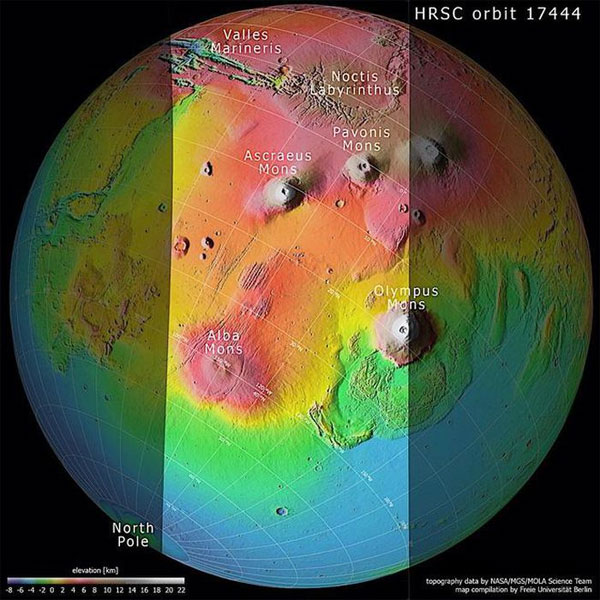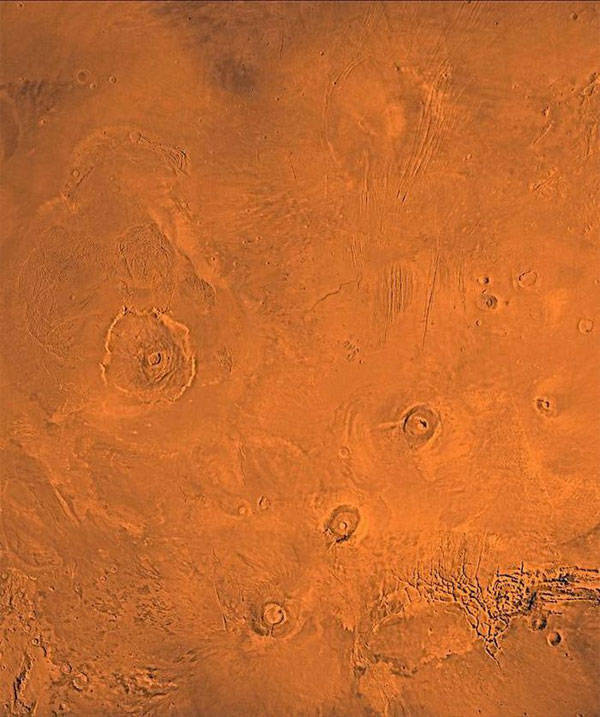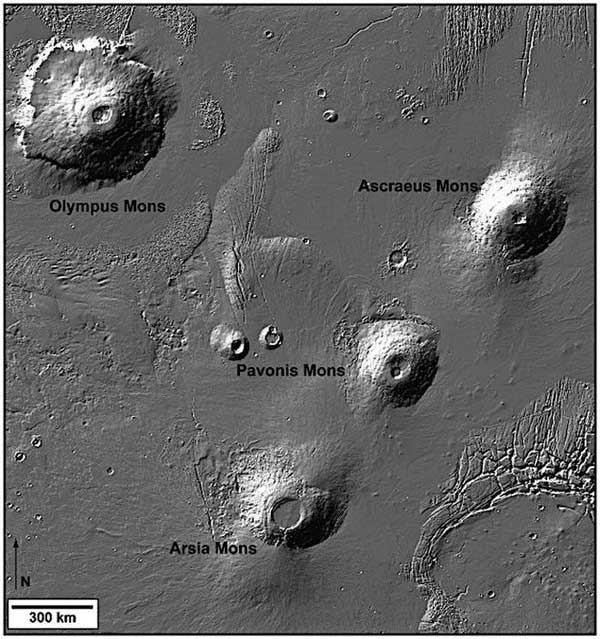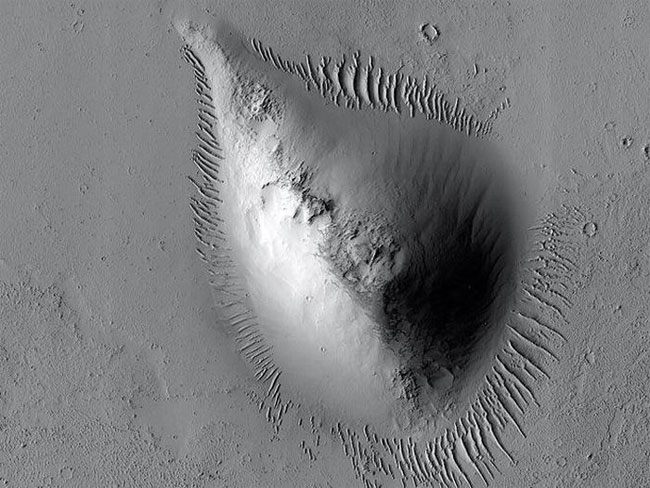This pear-shaped thing is a sign of 'life' on Mars
Mars used to "live" very strongly about 3.4 billion years ago. This pear-shaped thing is a sign!
When it comes to Mars, many people will immediately think of the phrase "dead planet". Mars has actually been in this incompatible state with life for perhaps billions of years, and will probably continue to "die" like that for the next billion years if we don't have an impact. any.
There was a time on Mars that had oceans (or at least we humans think), atmospheres, and possibly even some unknown life. For reasons that are lost in the past and cannot be recovered, all the above "possibles" have also gone into the past, and the volcanoes of the present are no different.



Image taken in the Tharsis region on Mars.
Volcanoes on Mars used to be very "living" about 3.4 billion years ago, but the last eruption happened about 50,000 years ago (the discovery of this eruption was also found in the past). this year), offers a glimmer of hope for a volcanic life that may still exist today on the dead planet.
Only that much can be inferred that signs of a glorious past of Mars will take a lot of work to uncover. Fortunately, we humans have developed quite a bit of technology to place on and around this red planet, and every now and then we come across a sign on the red planet that gives us a glimpse of the times. passed on this planet.

This mound is actually an old pumice volcano.
The prime example is something like the pear in the picture here , which has been buried in the ground for a long time. This mound is located in an area named Tharsis, captured in March of last year (2020) with the HiRISE camera from orbit, about 262km above the Martian surface.
According to NASA and the University of Arizona (the aforementioned camera operator), the mound is actually an old pumice volcano (of unknown duration) that survived a subsequent volcanic eruption.
The scientists believe the mound was formed "on a bed of very crumbly crust and under which lava flows" , and they also believe it to be one of the few forms of rock. Volcanic "life" still exists today.
According to the scientists, this study may "help reveal information about the strata and give us a deeper look at the pumice volcanoes on Mars ".
- NASA discovered methane gas, a sign of life on Mars
- New sign of life in Mars
- The probe confirms methane gas on Mars
- Explain why some seabirds have pear shapes
- Life may have existed 700 million years on Mars
- NASA discovered rod-shaped objects on Mars
- Discovered two locations with potential to nurture life on Mars
- Scientists make unexpected conclusions about time travel
- Crocodiles have migrated to live on Mars?
- Appearance characteristics predict that you will live long or die soon
- Discovered ice on Mars
- Video: Detecting the sign of Mars around the equator
 Announced 3 houses on the Moon and Mars
Announced 3 houses on the Moon and Mars Science proves: Mars also knows 'deflated'
Science proves: Mars also knows 'deflated' Elon Musk announced the price for a Mars trip was 11.6 billion VND, free of charge
Elon Musk announced the price for a Mars trip was 11.6 billion VND, free of charge NASA discovered strange 'gate' on Mars, is the hiding place found?
NASA discovered strange 'gate' on Mars, is the hiding place found?